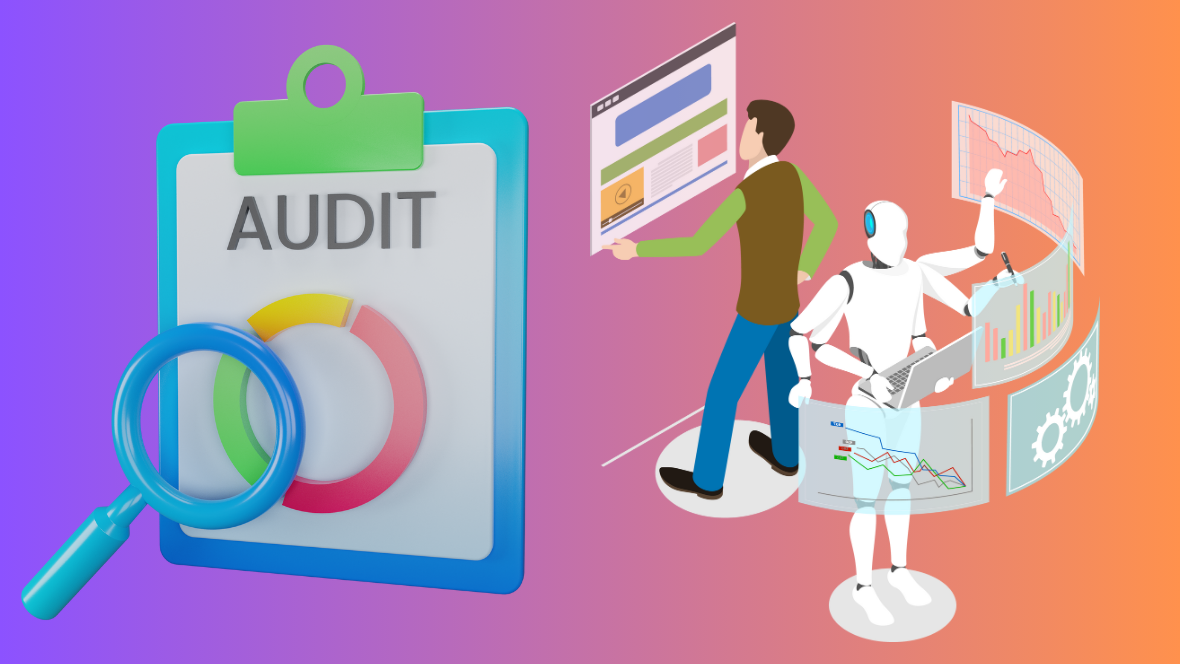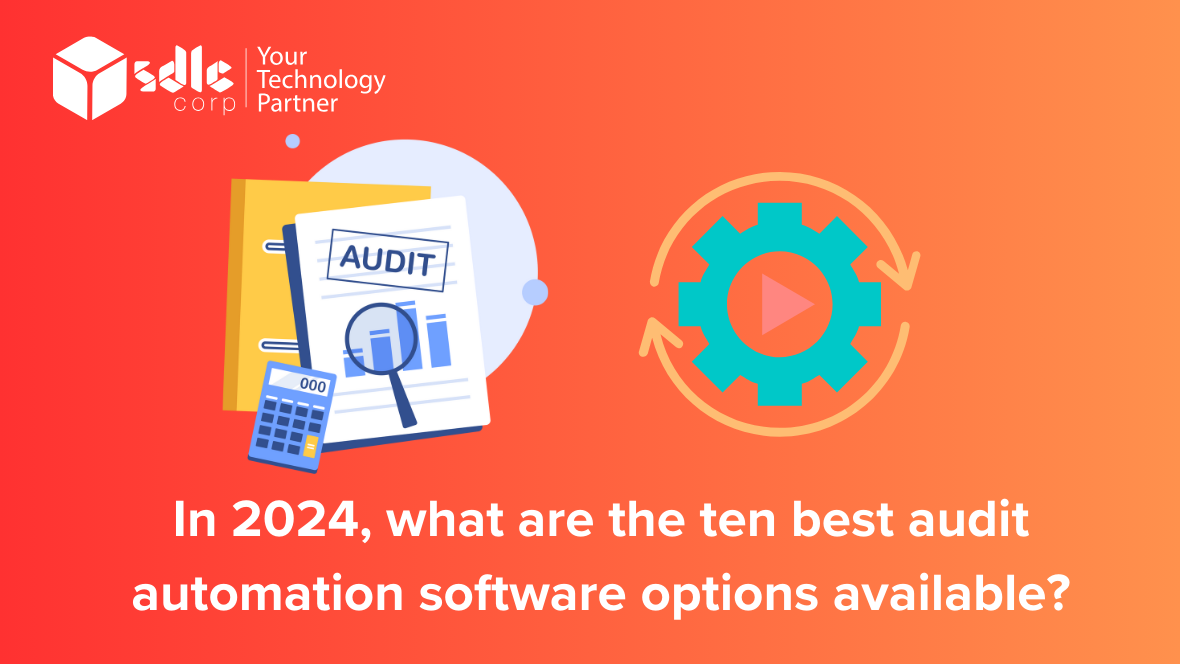In 2024, what are the ten best audit automation software options available?
In the rapidly evolving landscape of audit automation software in 2024, several top contenders stand out for their comprehensive capabilities, particularly in streamlining accounts payable audits. Leading the pack is ACL Robotics, renowned for its robust automation solutions that expedite data extraction, analysis, and risk assessment processes. With a keen focus on accuracy and compliance, ACL Robotics empowers auditors to detect anomalies and mitigate fraud efficiently within accounts payable workflows. BlackLine emerges as another standout, offering cloud-based solutions that revolutionize invoice processing and approval workflows, effectively reducing manual errors and accelerating financial processes. SAP Audit Management follows suit, providing a comprehensive suite of tools tailored for efficient planning, execution, and analysis of audits, including specialized features for accounts payable audits that seamlessly integrate with SAP ERP systems. TeamMate+ Audit and Ideagen Pentana Audit also merit attention for their centralized platforms and customizable workflows, enabling auditors to perform risk-based assessments and automate testing procedures for accounts payable processes. Meanwhile, Wolters Kluwer TeamMate Analytics and CaseWare IDEA excel in data analysis, empowering auditors to identify anomalies, errors, and compliance issues within accounts payable data. Trintech Cadency offers a suite of solutions specifically designed to streamline AP reconciliation processes, ensuring accuracy and compliance throughout the financial close process. Galvanize HighBond and Workiva Wdesk round out the list with their comprehensive GRC platforms, providing audit automation capabilities tailored to assess controls, identify risks, and automate testing procedures for accounts payable processes, ultimately enhancing efficiency and compliance for organizations across industries.
How Its Work?
Audit automation software is designed to streamline the auditing process, making it more efficient, accurate, and less time-consuming. Here’s a breakdown of how it typically works:
1. Data Collection: Audit automation software collects data from various sources, including financial records, databases, and other relevant documents. This can be done through manual entry, data importation from spreadsheets, or integration with other software systems.
2. Data Analysis: Once the data is collected, the software analyzes it to identify patterns, anomalies, and potential risks. Advanced algorithms and machine learning techniques may be employed to detect irregularities or discrepancies that might indicate fraud or errors.
3. Risk Assessment: Audit automation software assesses the risks associated with different aspects of the audited entity, such as financial performance, compliance with regulations, and operational efficiency. It helps auditors prioritize their focus areas based on the level of risk.
4. Workflow Management: The software facilitates the management of audit workflows by assigning tasks to team members, tracking progress, and sending notifications for deadlines and milestones. This ensures that the audit process remains on schedule and all necessary steps are completed.
5. Reporting and Documentation: Once the audit is completed, the software generates comprehensive reports summarizing the findings, recommendations, and conclusions. These reports can be customized to meet the specific requirements of stakeholders, such as management, regulators, or investors.
Now, regarding the integration of QR code scanning, some audit automation software may incorporate this feature to enhance data collection and verification processes. Here’s how it could be implemented:
– Asset Verification: QR codes can be affixed to physical assets, such as equipment or inventory items. Auditors can scan these codes using a mobile device equipped with the audit software to quickly retrieve information about the asset, such as its location, purchase date, and maintenance history.
– Document Management: QR codes can be printed on documents or files to facilitate easy retrieval and tracking. For example, auditors can scan QR codes on invoices, contracts, or financial statements to quickly access the corresponding digital records stored within the audit software.
– Verification of Compliance: QR codes can be used to verify compliance with regulations or industry standards. Auditors can scan codes placed on safety certificates, product labels, or quality control documents to ensure that the requirements are met.
By integrating QR code scanning capabilities, audit automation software can further streamline the audit process, improve accuracy, and reduce the risk of errors associated with manual data entry or retrieval.
"Simplifying Auditing: Top 10 Automation Software Solutions for 2024"
What is an Audit Automation Software?
Audit automation software is a powerful tool designed to revolutionize the way audits are conducted across various industries. It harnesses the capabilities of technology to streamline and enhance the entire auditing process, from data collection and analysis to reporting and compliance management.
1. Streamlined Data Collection: Audit automation software simplifies the process of gathering data from diverse sources. It can automatically extract information from financial records, databases, spreadsheets, and other relevant documents. This reduces the need for manual data entry, saving time and minimizing the risk of errors.
2. Advanced Data Analysis: One of the key features of audit automation software is its ability to analyze vast amounts of data with speed and precision. Advanced algorithms and machine learning techniques are often employed to identify patterns, anomalies, and potential risks within the data. This enables auditors to detect irregularities or discrepancies that might indicate fraud, errors, or non-compliance with regulations.
3. Efficient Risk Assessment: Audit automation software facilitates the assessment of risks associated with different aspects of the audited entity, such as financial performance, regulatory compliance, and operational efficiency. It provides auditors with insights into the likelihood and potential impact of various risks, helping them prioritize their focus areas and allocate resources effectively.
4. Optimized Workflow Management: The software streamlines the management of audit workflows by automating repetitive tasks, assigning responsibilities to team members, and tracking progress in real-time. It ensures that all necessary steps in the audit process are completed on schedule and that stakeholders are kept informed of key developments.
5. Comprehensive Reporting and Documentation: Audit automation software generates detailed reports summarizing the findings, recommendations, and conclusions of the audit. These reports can be customized to meet the specific requirements of stakeholders, such as management, regulators, or investors. The software also facilitates the documentation of audit procedures, enabling auditors to maintain a thorough record of their activities and decisions.
6. Integration with Other Systems: Many audit automation software solutions offer seamless integration with other software systems used within an organization, such as accounting software, ERP systems, or document management platforms. This enables data to be shared effortlessly across different departments and ensures consistency and accuracy throughout the audit process.
7. Enhanced Compliance Management: Audit automation software helps organizations stay compliant with relevant regulations, standards, and best practices. It provides tools for monitoring and enforcing compliance requirements, generating compliance reports, and implementing corrective actions where necessary.
Audit automation software represents a significant advancement in the field of auditing, offering numerous benefits including increased efficiency, accuracy, and transparency. By leveraging the power of technology, organizations can elevate their audit processes to new heights and gain greater confidence in their financial reporting and regulatory compliance efforts.
How Does Audit Automation Work?

1. Data Collection: Audit automation software collects data from various sources within an organization, such as financial records, transaction logs, invoices, and other relevant documents. This data can be gathered from different systems and formats, including databases, spreadsheets, and enterprise resource planning (ERP) software.
2. Data Integration: Once the data is collected, audit automation software integrates it into a centralized platform or database. This consolidation of data allows auditors to access and analyze information from multiple sources in a unified manner, eliminating the need to manually gather data from disparate systems.
3. Data Analysis: Audit automation software employs advanced algorithms and analytical tools to analyze the collected data. This analysis may include identifying patterns, trends, anomalies, and potential risks within the financial statements, transaction records, and operational metrics of the audited entity.
4. Risk Assessment: Based on the analysis of data, audit automation software assesses the risks associated with different aspects of the audited entity, such as financial performance, compliance with regulations, and operational efficiency. It helps auditors prioritize their focus areas and allocate resources accordingly to address high-risk areas.
5. Testing and Sampling: Audit automation software may automate the process of testing and sampling by selecting a representative sample of transactions or data points for further examination. This helps auditors evaluate the accuracy and reliability of financial information while reducing the time and effort required for manual sampling.
6. Workflow Management: Audit automation software facilitates the management of audit workflows by automating repetitive tasks, assigning responsibilities to audit team members, and tracking the progress of audit activities. It ensures that the audit process remains organized, efficient, and compliant with established protocols and timelines.
7. Documentation and Reporting: Once the audit is completed, audit automation software generates comprehensive reports summarizing the findings, recommendations, and conclusions. These reports can be customized to meet the specific requirements of stakeholders, such as management, regulators, or investors. Additionally, the software may facilitate the documentation of audit procedures, work papers, and evidence to support the audit findings.
8. Continuous Monitoring and Improvement: Audit automation software supports continuous monitoring of key risk indicators and performance metrics even after the audit is completed. It enables organizations to identify emerging risks and opportunities for improvement in real-time, allowing them to proactively address issues and enhance their internal controls and processes.
Overall, audit automation streamlines the auditing process by leveraging technology to collect, analyze, and manage data more efficiently and effectively. It enhances the accuracy, reliability, and timeliness of audit procedures while enabling auditors to focus on value-added activities such as data interpretation, risk assessment, and strategic insights.
What Are the Top 10 Audit Automation Tools?
1. ACL Robotics:
ACL Robotics is a comprehensive audit automation tool designed to streamline the entire audit process. It offers advanced data analytics capabilities, allowing auditors to analyze large datasets efficiently and uncover insights that may not be apparent through traditional methods. ACL Robotics enables auditors to automate repetitive tasks such as data extraction, cleansing, and testing, reducing the time and effort required for audits. With features like customizable workflows, real-time monitoring, and robust reporting capabilities, ACL Robotics empowers auditors to identify risks, ensure compliance, and provide valuable insights to stakeholders.
2. IDEA:
IDEA is a powerful audit automation software trusted by auditors worldwide for its versatility and efficiency. It offers a wide range of features, including data importation from various sources, advanced analytics, and customizable reporting. IDEA’s intuitive interface makes it easy for auditors to perform complex analyses and identify anomalies or irregularities in the data. With its extensive library of pre-built routines and scripts, IDEA allows auditors to automate repetitive tasks and focus on value-added activities. Whether conducting financial audits, fraud investigations, or compliance reviews, IDEA provides the tools and capabilities needed to enhance audit effectiveness and efficiency.
3. Galvanize HighBond:
Galvanize HighBond is an integrated governance, risk management, and compliance (GRC) platform that includes audit automation capabilities. It offers a suite of interconnected modules designed to address the full spectrum of audit and risk management needs. With features such as risk assessment, control testing, issue management, and compliance monitoring, Galvanize HighBond enables auditors to streamline their workflows and collaborate effectively with other stakeholders. Its intuitive interface and customizable dashboards provide real-time visibility into audit activities and findings, empowering organizations to proactively manage risks and improve decision-making.
4. TeamMate+ Audit:
TeamMate+ Audit is a leading audit management solution that combines powerful automation capabilities with user-friendly features. It offers a centralized platform for managing all aspects of the audit process, from planning and scheduling to execution and reporting. TeamMate+ Audit provides customizable templates and workflows, allowing auditors to tailor their processes to meet specific requirements and standards. With its integrated analytics tools, TeamMate+ Audit enables auditors to gain deeper insights into their data and identify trends, patterns, and risks. Whether conducting internal audits, external audits, or special investigations, TeamMate+ Audit helps organizations enhance transparency, accountability, and compliance.
5. Wolters Kluwer TeamMate Analytics:
Wolters Kluwer TeamMate Analytics is a powerful data analytics tool specifically designed for auditors. It offers a wide range of analytics tests and procedures that enable auditors to analyze data quickly and effectively. With its intuitive interface and customizable workflows, TeamMate Analytics allows auditors to automate repetitive tasks and focus on analyzing exceptions and outliers. Whether conducting substantive testing, trend analysis, or fraud detection, TeamMate Analytics provides the tools and capabilities needed to enhance audit quality and efficiency. Its seamless integration with other audit management systems enables auditors to leverage their existing data and processes to drive better insights and decision-making.
6. SAP Audit Management:
SAP Audit Management is an enterprise-grade audit automation solution that helps organizations streamline their audit processes and ensure compliance with regulations and standards. It offers a range of features, including risk assessment, audit planning, execution, and reporting. SAP Audit Management provides a centralized platform for managing all aspects of the audit lifecycle, from scoping and scheduling to review and approval. Its integrated analytics capabilities enable auditors to analyze large volumes of data quickly and identify trends, anomalies, and potential risks. With its customizable dashboards and real-time monitoring, SAP Audit Management empowers organizations to proactively manage risks and improve audit outcomes.
"Streamlining Auditing Processes: Top 10 Automation Software Solutions in 2024"
What Are the Benefits of the Top 10 Audit Automation Software Options in 2024?

1. Enhanced Accuracy and Consistency: The top audit automation software in 2024 leverages advanced algorithms and machine learning techniques to analyze financial statements with a high degree of accuracy. Automating the data extraction and analysis process minimizes the risk of human error and ensures consistency in financial statement interpretation across audits.
2. Time Efficiency and Increased Productivity: With audit automation software, financial statement analysis becomes significantly faster and more efficient. The software can process large volumes of financial data in a fraction of the time it would take manually, allowing auditors to focus their efforts on higher-value tasks such as data interpretation and risk assessment. This increase in productivity enables auditors to complete audits more quickly, ultimately reducing the time and resources required for each engagement.
3. Comprehensive Risk Identification: By integrating financial statement analysis capabilities, the top audit automation software in 2024 enables auditors to identify potential risks and anomalies in financial data more effectively. The software can analyze key financial metrics, ratios, and trends to detect irregularities that may indicate fraud, errors, or compliance issues. This proactive approach to risk identification helps auditors address potential issues early on, mitigating the impact on the organization’s financial health.
4. Streamlined Compliance Management: Audit automation software simplifies compliance management by providing auditors with access to a comprehensive library of regulatory standards, accounting principles, and industry best practices. The software can automatically cross-reference financial statements against relevant regulations and standards, flagging any discrepancies or non-compliance issues for further investigation. This streamlines the compliance auditing process and ensures that organizations maintain adherence to applicable regulations.
5. Improved Decision-Making Insights: The top audit automation software in 2024 offers advanced reporting and data visualization capabilities that provide auditors with valuable insights into the financial health and performance of audited entities. Through interactive dashboards, trend analysis, and customizable reports, auditors can gain a deeper understanding of the underlying factors driving financial performance and make more informed decisions. This facilitates strategic planning, risk management, and performance optimization for both auditors and stakeholders.
6. Enhanced Audit Trail and Documentation: Audit automation software maintains a detailed audit trail of all activities and changes made during the auditing process, including financial statement analysis. This ensures transparency, accountability, and compliance with auditing standards and regulatory requirements. Additionally, the software automates the generation of audit documentation, including work papers, memos, and financial reports, saving auditors time and effort in document preparation. This comprehensive documentation trail provides a clear record of the audit process, findings, and conclusions, which is essential for audit quality and regulatory compliance.
By integrating financial statement analysis capabilities, the top audit automation software in 2024 offers a wide range of benefits, including enhanced accuracy, time efficiency, risk identification, compliance management, decision-making insights, and audit trail documentation. These benefits empower auditors to conduct more thorough and efficient audits, ultimately adding value to organizations and stakeholders alike.
Conclusion
In conclusion, the top 10 audit automation software options available in 2024 represent a significant advancement in streamlining audit processes and enhancing efficiency within organizations. These innovative tools offer a range of features such as risk assessment, compliance management, data analytics, and workflow automation, allowing audit teams to work smarter and more effectively. By leveraging these cutting-edge solutions, businesses can improve audit quality, reduce manual effort, mitigate risks, and ultimately drive better business outcomes. As technology continues to evolve, embracing these audit automation software options will be essential for staying competitive and ensuring success in today’s dynamic business environment. With X-Audit Pro robust features for data analysis and workflow management, X-Audit Pro emerges as a top contender in the realm of audit automation software. Its seamless integration capabilities extend to purchase order systems, enabling auditors to effortlessly track and verify procurement processes.
FAQs
1. Is audit automation software compatible with our existing systems?
This question addresses concerns about integration with current software infrastructure. Compatibility ensures smooth data transfer and avoids the need for extensive system changes.
2. How does the software ensure data security and compliance?
Auditors often inquire about measures taken to safeguard sensitive data and ensure compliance with regulations such as GDPR or industry-specific standards like SOC 2. Strong security features are crucial for trust and legal compliance.
3. What level of customization is available for reports and workflows?
Auditors may need tailored reports and workflows to meet specific requirements or adapt to unique audit scenarios. Flexibility in customization allows for greater efficiency and adaptability to diverse audit needs.
4. Can the software handle both internal and external audits?
Some audit automation software specializes in internal audits, while others cater to external audits or both. Understanding the software’s capabilities in this regard ensures it aligns with the organization’s audit objectives.
5. What kind of support and training options are provided?
Adequate training and ongoing support are essential for the effective implementation and utilization of audit automation software. Auditors often inquire about available training resources, customer support channels, and response times for assistance.
Contact Us
Let's Talk About Your Project
















